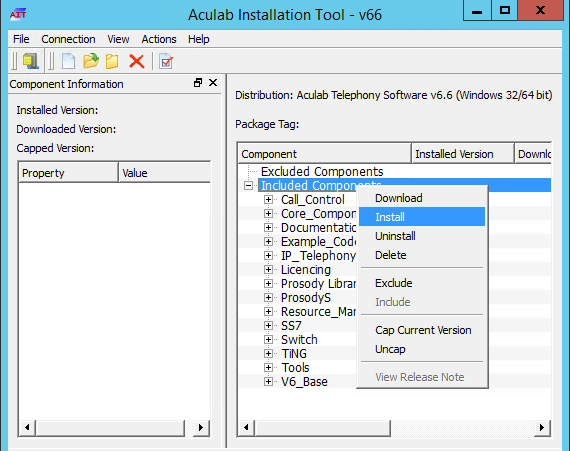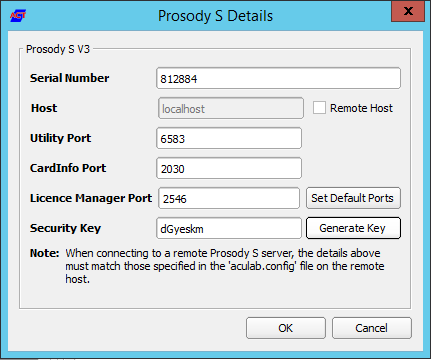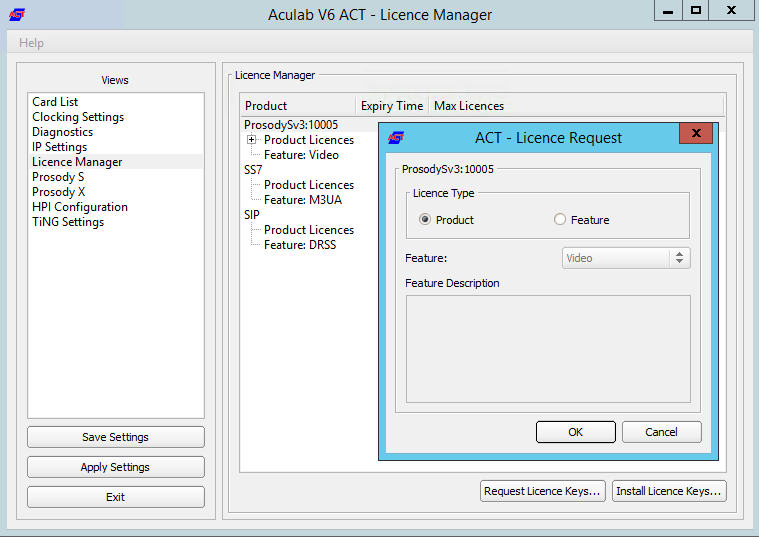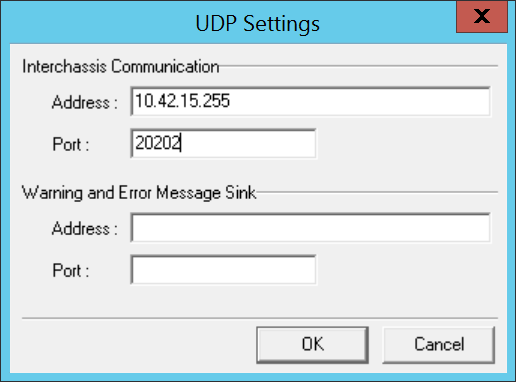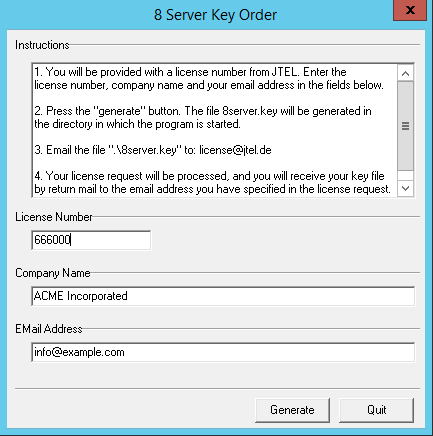Introduction
The TEL server runs the call flows for telephone calls in the jtel system.
It also runs background processes, such as jobs to create statistics subscription e-mails and convert audio files or create audio with a TTS engine.
Also, usually PBX connectors are run on the TEL server.
Installation
File Downloads
The following script downloads all the files needed in this section.
powershell -command "& { Start-BitsTransfer -Source https://cdn.jtel.de/downloads/configs/8server_config_v8.reg -Destination $Env:UserProfile\Downloads }"
powershell -command "& { Start-BitsTransfer -Source https://cdn.jtel.de/downloads/configs/odbc_ini_v52.reg -Destination $Env:UserProfile\Downloads }"
powershell -command "& { Start-BitsTransfer -Source http://cdn.jtel.de/downloads/aculab/AculabInstaller.msi -Destination $Env:UserProfile\Downloads }"
powershell -command "& { Start-BitsTransfer -Source https://cdn.jtel.de/downloads/tools/AutoLogon.zip -Destination $Env:UserProfile\Downloads }"
Configure Data Sources
Import the downloaded file odbc_ini_v52.reg to the registry to configure the data sources in windows.
You may need to change the password entries for each datasource, depending on the password configured for the mysql database.
Prepare 8-Server Registry
Import the downloaded file 8server_config_v8.reg to the registry to prepare the registry for 8-Server.
You will need to change the Machine ID setting - set this to the last byte of the IPv4 address in the local network. You need to change this value to HEX.
Install 8-Server
Clone Repository
IMPORTANT - THE STARTUP PROCEDURE IN STDCALL_MCP.CFG REQUIRES RC-5.23.13 AS MORE THAN 10 COMMANDS ARE REQUIRED
Run the following commands from a non elevated command prompt:
c: cd \ mkdir \8Server cd \8Server git clone https://bitbucket.org/jtelgmbh/8-server-deploy.git deploy
Checkout Release
Run the following commands from a non elevated command prompt (in the same one as above):
cd deploy git checkout release/rc-5.23.28
Install 8-Server
Telephony and Deamons
Run the following commands from a non elevated command prompt:
c: cd \8Server\deploy\OEM\JTEL\ first_install.cmd copy_keyfile_en_mcp_v67.cmd
Deamons Only
Run the following commands from a non elevated command prompt:
c: cd \8Server\deploy\OEM\JTEL\ first_install.cmd copy_keyfile_en_daemon.cmd
Windows Firewall
The following commands configure the windows firewall. Run these in an elevated cmd window:
netsh advfirewall firewall add rule name="ICMPv4" protocol=icmpv4:8,any dir=in action=allow edge=yes profile=private,domain netsh advfirewall firewall add rule name="Hazelcast" dir=in action=allow protocol=TCP localport=5701-5801 edge=no profile=private,domain netsh advfirewall firewall add rule name="RTP" dir=in action=allow protocol=UDP localport=30000-34999 edge=yes profile=private,domain netsh advfirewall firewall add rule name="SIP" dir=in action=allow protocol=UDP localport=5060 edge=yes profile=private,domain netsh advfirewall firewall add rule name="UDP Local" dir=in action=allow protocol=UDP localport=1-65535 edge=no profile=private,domain
Windows Defender
Virus Scan
Note: running an incorrectly configured realtime virus scanner on the telephony server can seriously impact performance or even stop the server working correctly.
The following commands configure windows defender, to exclude some telephony server processes and directories.
powershell -inputformat none -outputformat none -NonInteractive -Command Add-MpPreference -ExclusionPath "C:\8Server" powershell -inputformat none -outputformat none -NonInteractive -Command Add-MpPreference -ExclusionProcess robot5.exe" powershell -inputformat none -outputformat none -NonInteractive -Command Add-MpPreference -ExclusionProcess giHal.exe" powershell -inputformat none -outputformat none -NonInteractive -Command Add-MpPreference -ExclusionProcess giAcu.exe" powershell -inputformat none -outputformat none -NonInteractive -Command Add-MpPreference -ExclusionProcess sipserv.exe" powershell -inputformat none -outputformat none -NonInteractive -Command Add-MpPreference -ExclusionProcess ProsodySServ.exe"
Install Aculab SIP and RTP Stack
Install AIT
Run the following commands from a non elevated command prompt, and install for all users:
start %USERPROFILE%\Downloads\AculabInstaller.msi
Install Aculab v67
- Start the AIT application
- Choose "Connection" -> "Work offline".
- "File" -> ""Import" -> Load Aculab Package File...".
c:\8Server\deploy\oem\jtel\aculab\v67.apf
Target Directory:C:\aculab\v67
"Install"
Note - if secure boot is not switched off in the virtual environment, the installation of the drivers might fail.
Configure Aculab
- Start ACT
- Add a Prosody-S instance
- Choose "Prosody S" ... "Add...":
- The serial number can be freely chosen, as can the security key. We recommend 100000 and jtel respectively.
- Install the licenses
- Choose "License Manager", Install Licence Keys...
- Save and apply
- Choose "Save Settings" then "Apply Settings".
start notepad++
All following config files can be opened via cmd with a simple start notepad++ command to speed up the process
Symmetric RTP
To configure symmetric RTP, as well as setting a static value for the telephone-event payload codec at 101, a file is created in C:\Aculab\v67\cfg\mhp.cfg with the following content:
start notepad++ C:\Aculab\v67\cfg\mhp.cfg
LocalRtpSymmetric=1 PayloadTelephoneEvent=101
PayloadTelephoneEvent
A setting to implement a static telephone-event codec might not be required. Please consult with your system administrator before configuring this setting, as usually a negotiation is made in the SDP per call to define the codec for telephone events, which ensures that no static setting is required.
Port Range
If it is required, that a port range is used for RTP, then the file C:\aculab\v67\cfg\aculab.config must be edited, set the port range as is required by the remote end (PBX / SIP Trunk):
start notepad++ C:\aculab\v67\cfg\aculab.config
... <rxrange minvalue="30000" maxvalue="34999"/> ...
Services
VERY IMPORTANT FOR WINDOWS SERVER 2019
Setup the following Aculab services to start only manually:
- Aculab Prosody S
- Aculab Resource Manager
- Aculab Startup Service
Setup the following Aculab services to be disabled:
- Aculab SS7 TS Manager
Startup Scripts
Net Use
Check the file c:\8Server\bin\startup.cmd - to see whether the net use command needs to be changed or not.
start notepad++ c:\8Server\bin\startup.cmd
Windows Server 2019
Comment out the following lines in the startup.cmd file:
aculabservicemanager -stop sip
Shortcut
Create a shortcut for:
c:\8Server\bin\startup_launcher.cmd
and place this in shell:startup.
Configuration Files
Create Default Configuration giAculab.cfg
Start a cmd up, and start gihal. This will create a default giAculab.cfg file.
Note - make sure the aculab services are started at this point.
Do this in an elevated command prompt:
Sometimes windows does not update the path immediately after installation of the components above. The following must be present in the path, and as an environment variable, for the rest of the installation to work:
PATH=...;c:\8Server\gi2\bin
R5_CONFIG_DIR=c:\8Server\Config\
This can be done by entering the following commands into a ADMIN command prompt:
cd c:\ setx /M PATH "%PATH%;c:\8Server\gi2\bin" setx /M R5_CONFIG_DIR "c:\8Server\Config\"
gihal # If it starts, press CTRL+C then cancel
Edit giAculab.cfg
The file is in:
c:\8Server\gi2\config\giAculab.cfg
start notepad++ c:\8Server\gi2\config\giAculab.cfg
giAculab.cfg is now configured for SIP with 8-Server. Replace the SIP section in the newly created file with the section below, changing the following:
- channel_count to the number of licensed SIP channels
- default_rtp_ip should be changed to the IP address of the NIC in the telephony network in multi-homed systems. Leave as is, if the system is not multi-homed.
[SIP]
{
netport = 0
channel_count = 30
default_vmp_set = "VMP_SET1"
default_rtp_ip = "0.0.0.0"
default_rtp_dscp = 46
defaultSignallingGateway = ""
numberOnly = FALSE
rfc2833RxToneEvent = TRUE
rfc2833RxInbandToneRegeneration = TRUE
rfc2833TxToneConversion = TRUE
}
Edit gi2.ini
Edit the file C:\8Server\gi2\bin\gi2.ini
At the very bottom, change the following setting to 2 (standard is 1):
start notepad++ C:\8Server\gi2\bin\gi2.ini
DISABLE_ERROR_DIALOG = 2
Edit StdCall_MCP.cfg
IMPORTANT - DO NOT USE AN OLDER CONFIG UNDER WINDOWS SERVER 2019
The following settings are changed in the file:
c:\8Server\config\StdCall_MCP.cfg
start notepad++ c:\8Server\config\StdCall_MCP.cfg
- Enable_SIP_Registrar - for installations which require a registrar for the SIP trunk (e.g. Panasonic PBX installations)
- Default_SIP_Contact - change to the IP address of the server (for multi-homed systems use the IP address of the NIC in the telephony network
- Startup_Command4 und Startup_Sleep4 - delete these lines if the machine does not require registration to a SIP trunk (for example NFON requires registration - in this case leave in!)
- Total_Channel_Count - Set to the total licensed SIP channel count
- Inbound_Use_Channels - Set to the number of agents + supervisors + queue + IVR channels
- Outbound_Use_Channels - Set to the number of agents + supervisors + call transfer channels
- Note: Total_Channel_Count = Inbound_Use_Channels + Outbound_Use_Channels
ROOT
{
StdCall_MCP
{
bool Use_RemoteHAL = TRUE;
integer LocalStream_RX_Port = 0;
integer Dispatcher_ThreadCount = 4;
bool Auto_SETUP_ACK = FALSE;
string Alert_DefaultFile = "c:\8Server\Voice\System\070.wav";
integer Stream_Receiver_MaxUnconfirmedPackets = 8;
integer Stream_Receiver_MaxBufferSize = 16384;
integer Stream_Sender_Timeout = 2000;
integer Stream_Sender_MaxBufferSize = 16384;
integer SIP_Interceptor_Port = 5060;
bool Enable_SIP_Interceptor = TRUE;
integer Start_SIP_Interceptor_After_Command = 5;
bool Enable_SIP_Registrar = FALSE;
bool Enable_L3_Monitor = FALSE;
string Default_SIP_Contact = "<sip:10.42.13.84>";
string Startup_Command0 = "c:/windows/system32/taskkill.exe /im gihal.exe /f";
integer Startup_Sleep0 = 2000;
string Startup_Command1 = "c:/windows/system32/taskkill.exe /im giacu.exe /f";
integer Startup_Sleep1 = 2000;
string Startup_Command2 = "c:/aculab/v67/bin/amd64/aculabservicemanager -stop sip";
integer Startup_Sleep2 = 2000;
string Startup_Command3 = "c:/windows/system32/net.exe stop acuresmgr";
integer Startup_Sleep3 = 2000;
string Startup_Command4 = "c:/windows/system32/net.exe stop prosodysserv";
integer Startup_Sleep4 = 2000;
string Startup_Command5 = "c:/windows/system32/net.exe stop aculabstartupservice";
integer Startup_Sleep5 = 2000;
string Startup_Command6 = "c:/windows/system32/net.exe start aculabstartupservice";
integer Startup_Sleep6 = 2000;
string Startup_Command7 = "c:/windows/system32/net.exe start acuresmgr";
integer Startup_Sleep7 = 2000;
string Startup_Command8 = "c:/windows/system32/net.exe start prosodysserv";
integer Startup_Sleep8 = 2000;
string Startup_Command9 = "c:/aculab/v67/bin/amd64/aculabservicemanager -start sip";
integer Startup_Sleep9 = 2000;
string Startup_Command10 = "c:/8Server/gi2/bin/giHal.exe -w -tingtrace";
integer Startup_Sleep10 = 20000;
string Startup_Command11 = "c:/8Server/bin/startup_registrations.cmd";
integer Startup_Sleep11 = 1000;
string Shutdown_Command0 = "c:/windows/system32/taskkill.exe /im gihal.exe /f";
integer Shutdown_Sleep0 = 2000;
string Shutdown_Command1 = "c:/windows/system32/taskkill.exe /im giacu.exe /f";
integer Shutdown_Sleep1 = 2000;
Controller1
{
integer Total_Channel_Count = 20;
integer Inbound_Use_Channels = 10;
integer Outbound_Use_Channels = 10;
string HAL_HostName = "127.0.0.1";
bool SIP_URL_Cleaner = TRUE;
bool SIP_Number_Cleaner = TRUE;
bool Ignore_L1Status = TRUE;
bool RFC2833_DTMF_Detection = TRUE;
};
};
};
8-Server Configuration
Startup 8-Server:
c:\8Server\Bin\robot5.exe
Configuration
Machine ID (Settings ... General)
Set to the last byte of the IPv4 address of the machine.
Internet Components
Increase the number of UDP components, but only on machines which have a lot of lines.
Recommend: up to 200 lines use 40. Above 200 lines, increase by 20 for every additional 100 lines.
UDP Settings
If building a cluster with more than one 8-Server, enter the broadcast address for interchassis communication, using port 20202:
Daemon Processes
\\acd-store\shared\JTELCarrierPortal\AppServer\acd\Daemons\acd.Daemon.AcdEvents.Cleaner.r5 \\acd-store\shared\JTELCarrierPortal\AppServer\acd\Daemons\acd.Daemon.AcdEvents.Distribute.r5 \\acd-store\shared\JTELCarrierPortal\AppServer\acd\Daemons\acd.Daemon.DailyAutoGroupLogout.r5 \\acd-store\shared\JTELCarrierPortal\AppServer\acd\Daemons\acd.Daemon.DailyAutoUserLogout.r5 \\acd-store\shared\JTELCarrierPortal\AppServer\acd\Daemons\acd.Daemon.GroupDistribute.r5 \\acd-store\shared\JTELCarrierPortal\AppServer\acd\Daemons\acd.Daemon.LongCalls.Warning.r5 \\acd-store\shared\JTELCarrierPortal\AppServer\acd\Daemons\acd.Daemon.UDP.r5 \\acd-store\shared\JTELCarrierPortal\AppServer\conf\ConfServer.Daemon.UDP.r5 \\acd-store\shared\JTELCarrierPortal\AppServer\Portal.Daemon.8Server.LogFileCleaner.r5 \\acd-store\shared\JTELCarrierPortal\AppServer\Portal.Daemon.Audio.Converter.r5 \\acd-store\shared\JTELCarrierPortal\AppServer\Portal.Daemon.ChangeEvent.Manager.r5 \\acd-store\shared\JTELCarrierPortal\AppServer\Portal.Daemon.EventSpool.SMS.r5 \\acd-store\shared\JTELCarrierPortal\AppServer\Portal.Daemon.EventSpool.SMTP.r5 \\acd-store\shared\JTELCarrierPortal\AppServer\Portal.Daemon.Recordings.Cleaner.r5 \\acd-store\shared\JTELCarrierPortal\AppServer\Portal.Daemon.Recordings.Manager.r5 \\acd-store\shared\JTELCarrierPortal\AppServer\Portal.Daemon.ReportSubscriptions2.r5 \\acd-store\shared\JTELCarrierPortal\AppServer\Portal.Daemon.SystemStartSequence.Cleaner.v2.r5 \\acd-store\shared\JTELCarrierPortal\AppServer\Portal.Daemon.SystemStartSequence.Update.v2.r5 \\acd-store\shared\JTELCarrierPortal\AppServer\TimeServiceMonitor\portal.Daemon.TimeServiceMonitor.r5 C:\8Server\Samples\LogFileCleaner\8Server.Daemon.LogFileCleaner.mySQL.r5
The following list is for a pure telephony server (daemon applications are running on a separate server):
\\acd-store\shared\JTELCarrierPortal\AppServer\acd\Daemons\acd.Daemon.UDP.r5 \\acd-store\shared\JTELCarrierPortal\AppServer\conf\ConfServer.Daemon.UDP.r5 \\acd-store\shared\JTELCarrierPortal\AppServer\Portal.Daemon.SystemStartSequence.Update.v2.r5 \\acd-store\shared\JTELCarrierPortal\AppServer\TimeServiceMonitor\portal.Daemon.TimeServiceMonitor.r5 C:\8Server\Samples\LogFileCleaner\8Server.Daemon.LogFileCleaner.mySQL.r5
The following list is for a pure daemon application server:
\\acd-store\shared\JTELCarrierPortal\AppServer\acd\Daemons\acd.Daemon.AcdEvents.Cleaner.r5 \\acd-store\shared\JTELCarrierPortal\AppServer\acd\Daemons\acd.Daemon.AcdEvents.Distribute.r5 \\acd-store\shared\JTELCarrierPortal\AppServer\acd\Daemons\acd.Daemon.DailyAutoGroupLogout.r5 \\acd-store\shared\JTELCarrierPortal\AppServer\acd\Daemons\acd.Daemon.DailyAutoUserLogout.r5 \\acd-store\shared\JTELCarrierPortal\AppServer\acd\Daemons\acd.Daemon.GroupDistribute.r5 \\acd-store\shared\JTELCarrierPortal\AppServer\acd\Daemons\acd.Daemon.LongCalls.Warning.r5 \\acd-store\shared\JTELCarrierPortal\AppServer\acd\Daemons\acd.Daemon.UDP.r5 \\acd-store\shared\JTELCarrierPortal\AppServer\Portal.Daemon.8Server.LogFileCleaner.r5 \\acd-store\shared\JTELCarrierPortal\AppServer\Portal.Daemon.Audio.Converter.r5 \\acd-store\shared\JTELCarrierPortal\AppServer\Portal.Daemon.ChangeEvent.Manager.r5 \\acd-store\shared\JTELCarrierPortal\AppServer\Portal.Daemon.EventSpool.SMS.r5 \\acd-store\shared\JTELCarrierPortal\AppServer\Portal.Daemon.EventSpool.SMTP.r5 \\acd-store\shared\JTELCarrierPortal\AppServer\Portal.Daemon.Recordings.Cleaner.r5 \\acd-store\shared\JTELCarrierPortal\AppServer\Portal.Daemon.Recordings.Manager.r5 \\acd-store\shared\JTELCarrierPortal\AppServer\Portal.Daemon.ReportSubscriptions2.r5 \\acd-store\shared\JTELCarrierPortal\AppServer\Portal.Daemon.SystemStartSequence.Cleaner.v2.r5 \\acd-store\shared\JTELCarrierPortal\AppServer\Portal.Daemon.SystemStartSequence.Update.v2.r5 \\acd-store\shared\JTELCarrierPortal\AppServer\TimeServiceMonitor\portal.Daemon.TimeServiceMonitor.r5 C:\8Server\Samples\LogFileCleaner\8Server.Daemon.LogFileCleaner.mySQL.r5
Stop 8-Server
Now shutdown 8-Server using File ... Exit.
8-Server License
Use C:\8Server\bin\KeyOrder6.exe to request a license for 8-Server:
Send the file C:\8Server\bin\8server.key to support@jtel.de
Once the license file is received, delete the file:
C:\8Server\bin\8server.key
and place the license file in:
C:\8Server\Config
Install the Platform UDP Listener
Installation
Install the platform UDP listener with the following commands:
C: md \PlatformUDPlistener xcopy /E \\acd-store\shared\JTELCarrierPortal\Utils\Install\PlatformUDPListener C:\PlatformUDPlistener copy \\acd-store\shared\hazelcast.xml C:\PlatformUDPlistener\conf
Shortcut
Create a shortcut from:
c:\PlatformUDPListener\startListener.bat
and place this in shell:startup
Test
Start the platform UDP listener. It should find other cluster members, for example the webserver or database master, if other machines are already active.
Windows Autostart
To enable all applications to startup automatically (unless they are installed as services), an automatic login should be configured on windows.
Unpack AutoLogin.zip, and run the executable.
Setup the required account details, and save.
Reboot the machine to test! Note - give the machine a couple of minutes since if you attach via RDP to the account running the jtel applications, you will cause a login to occur and the applications to be started.
